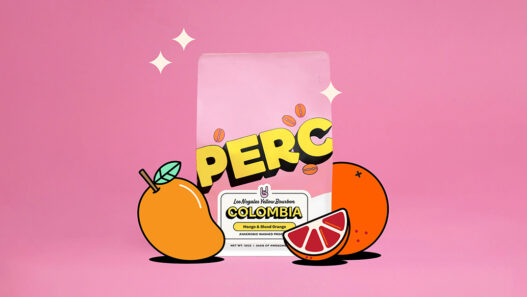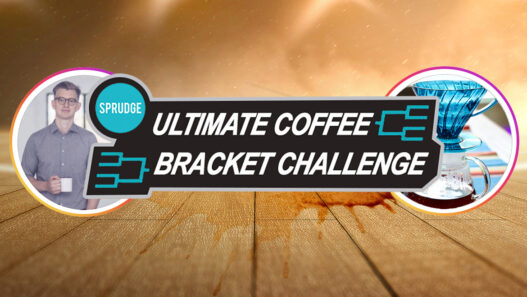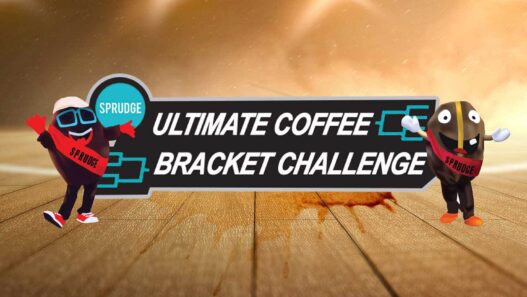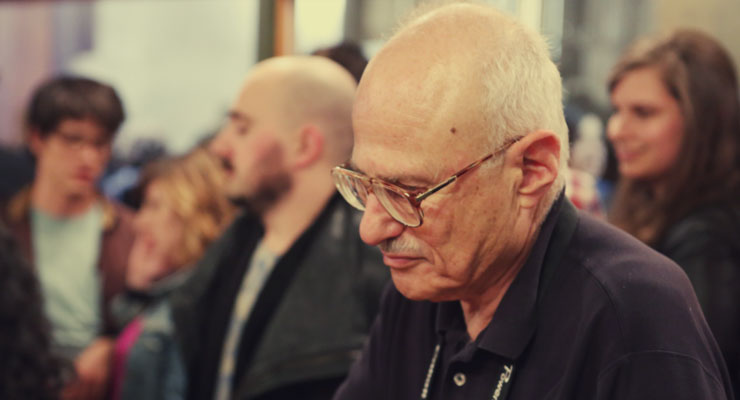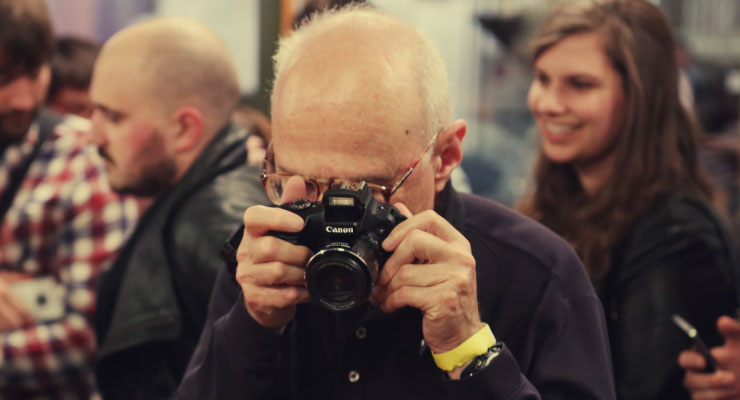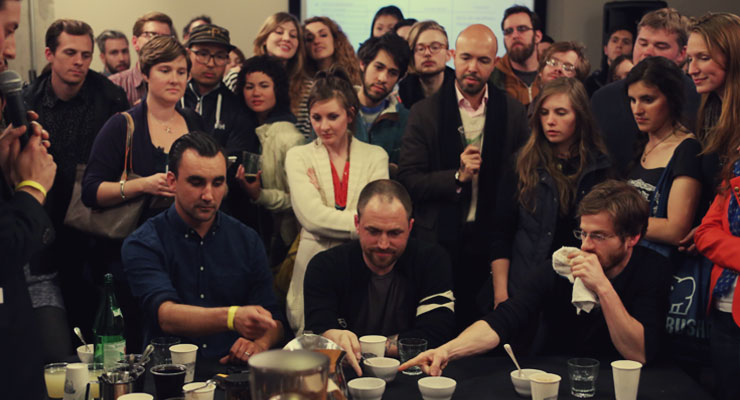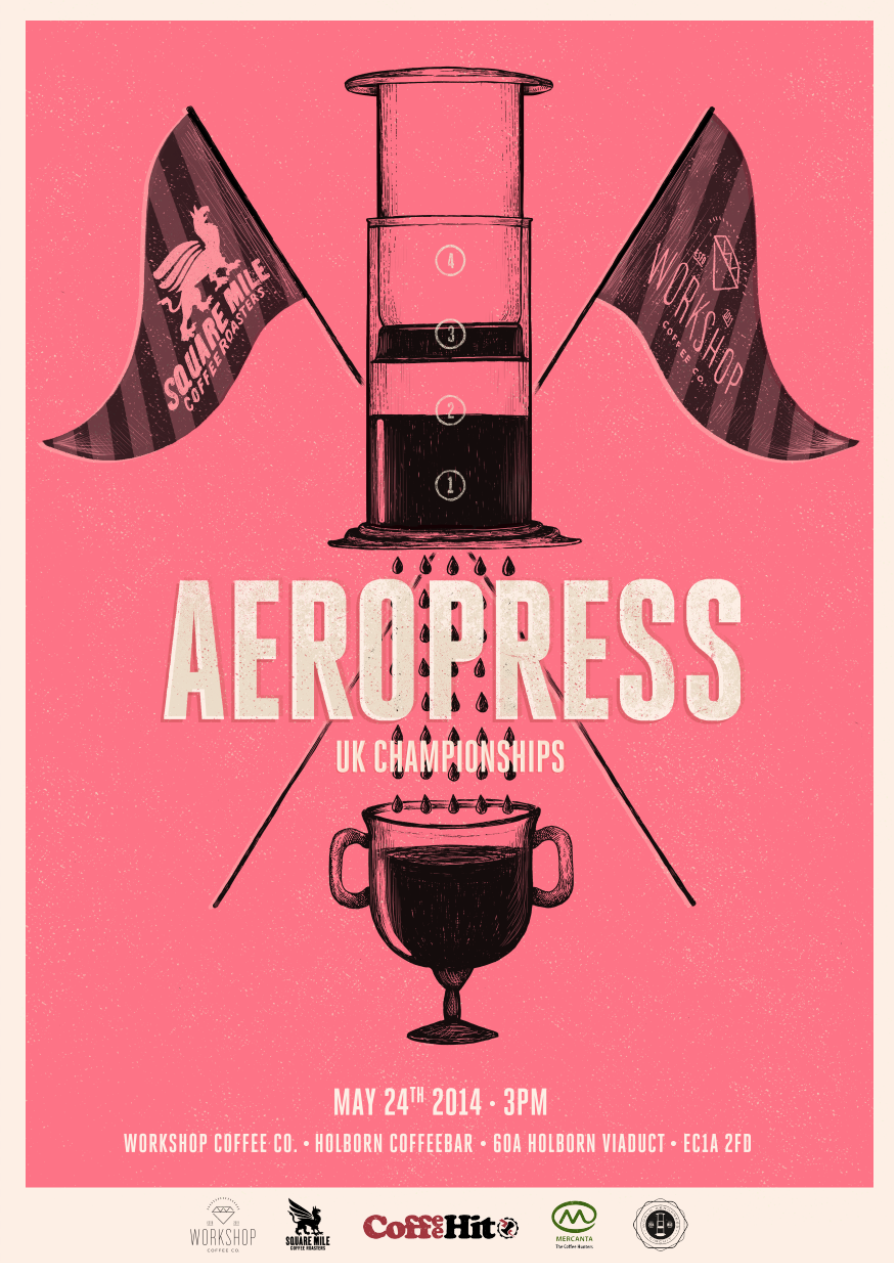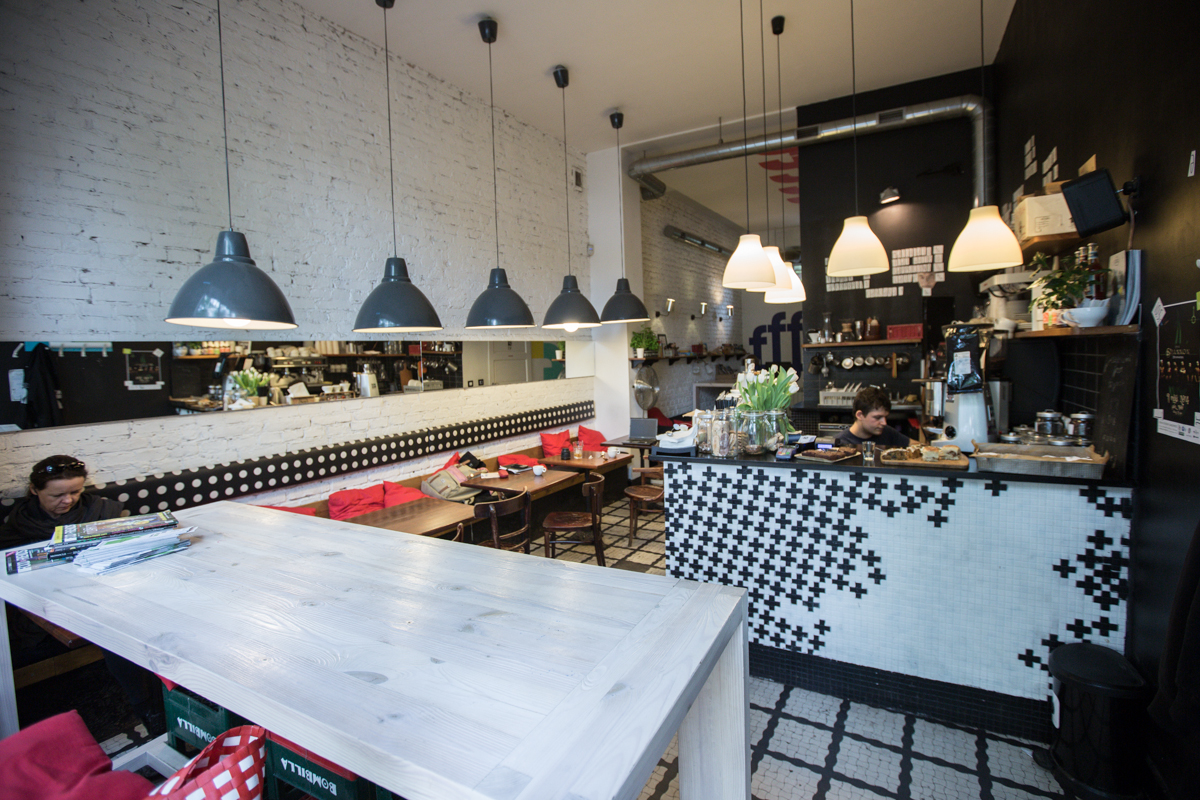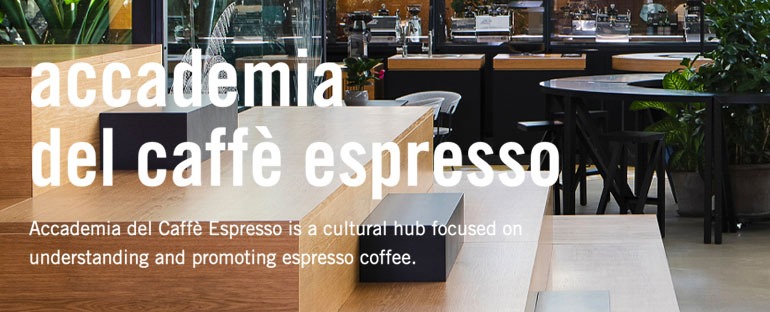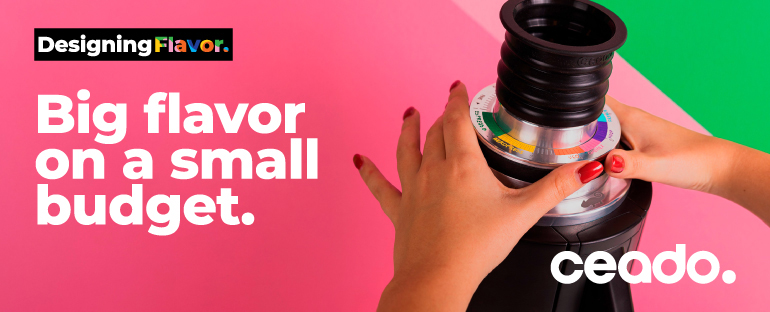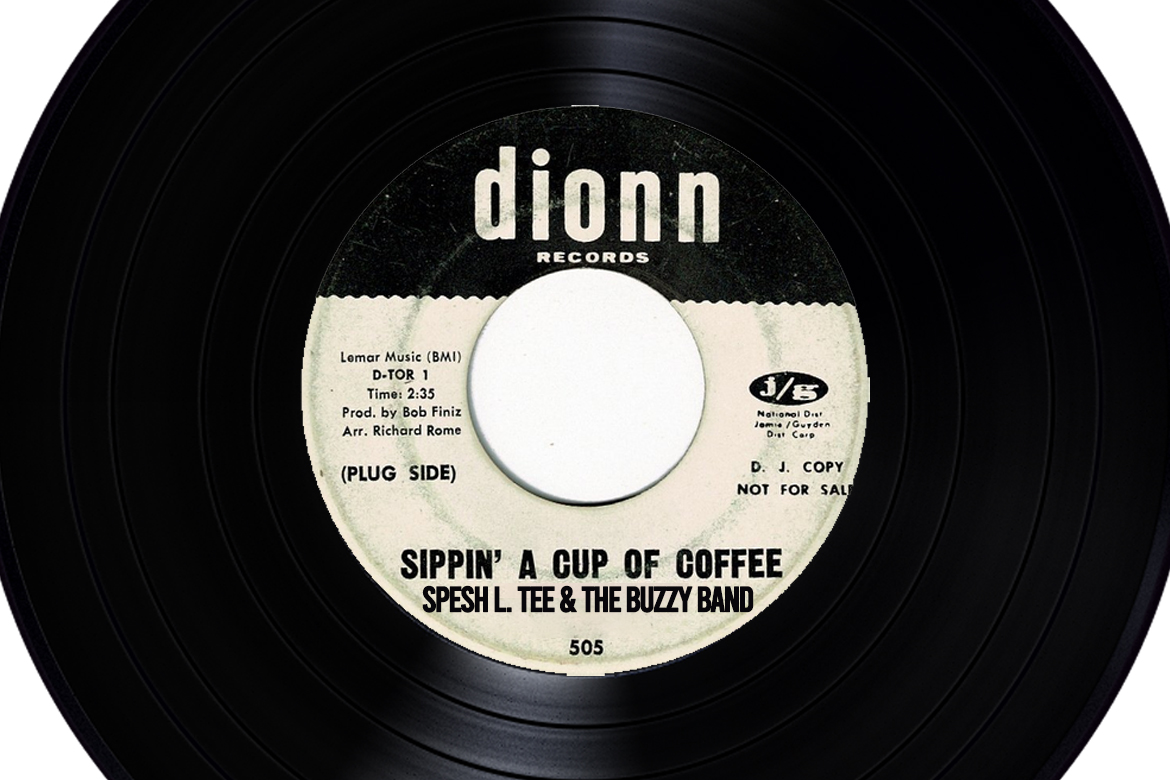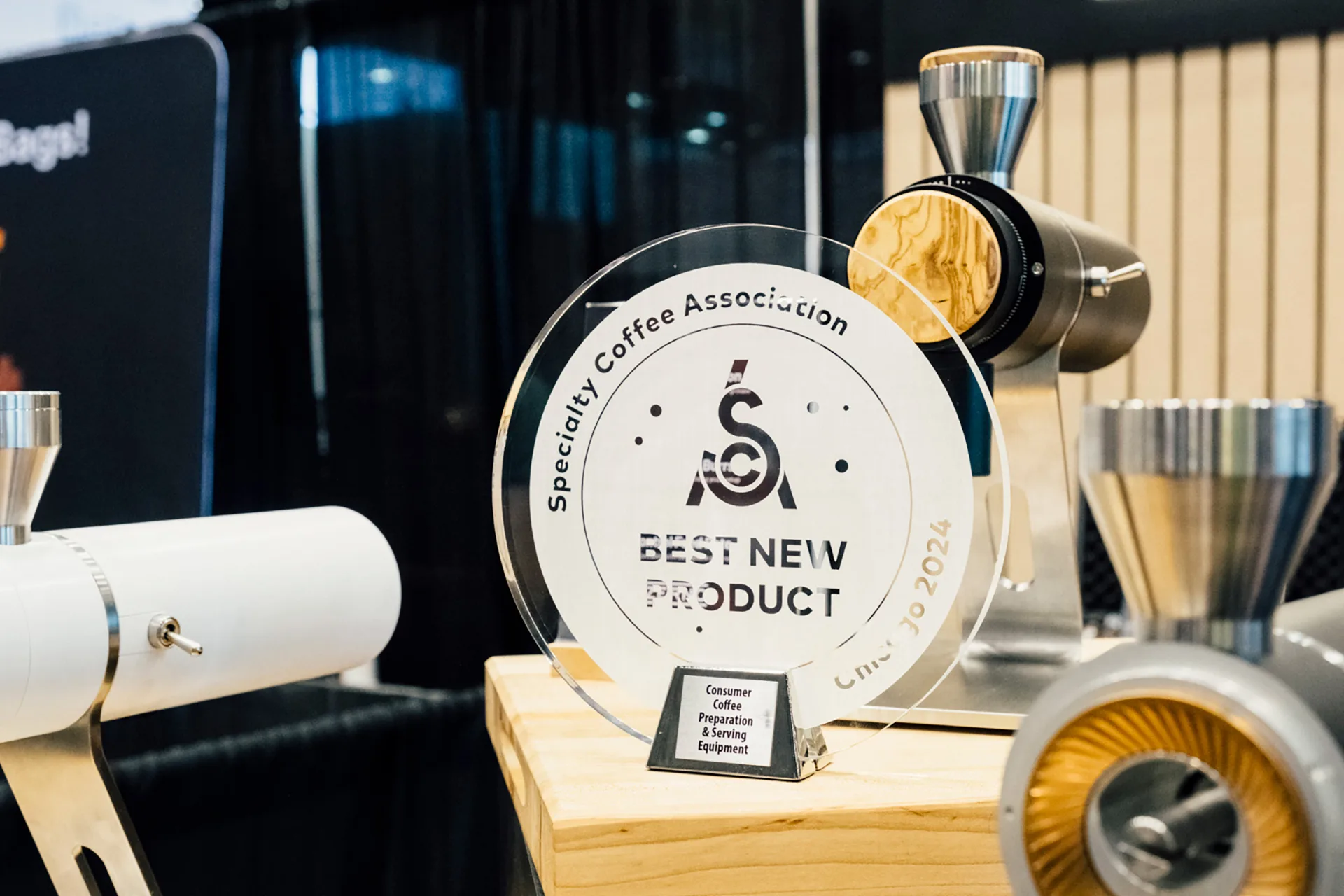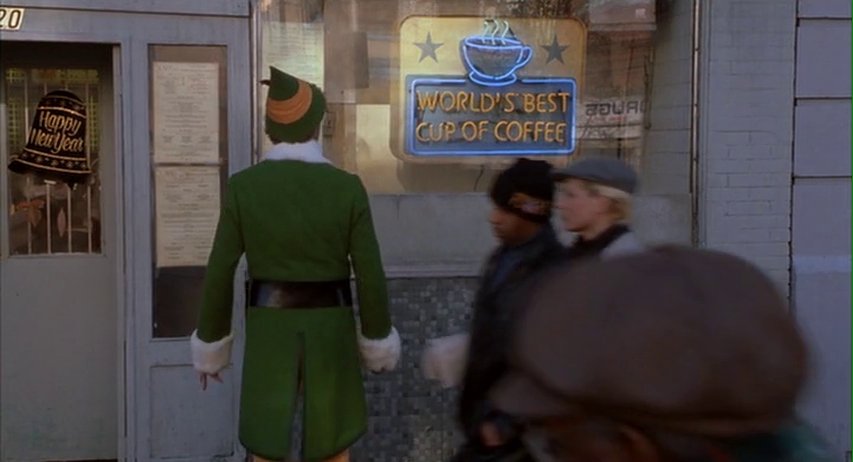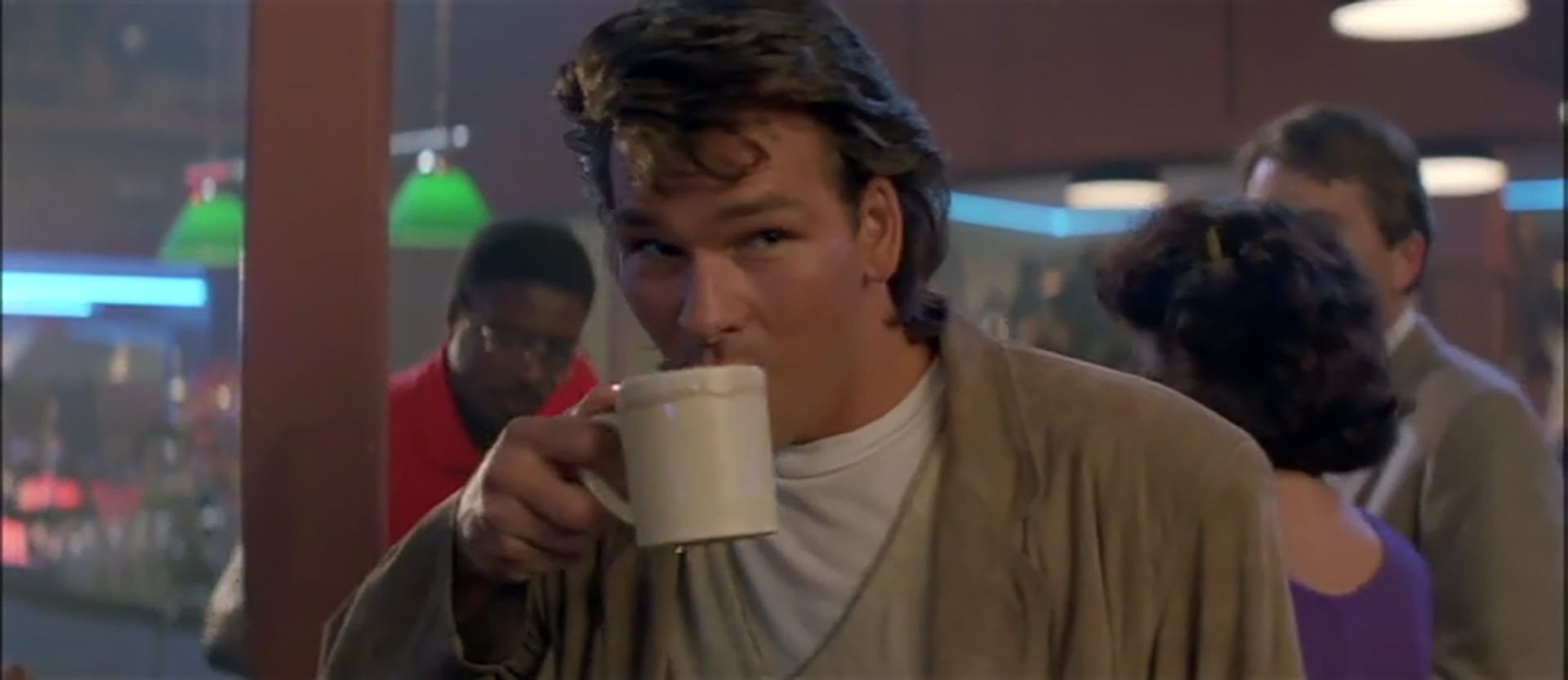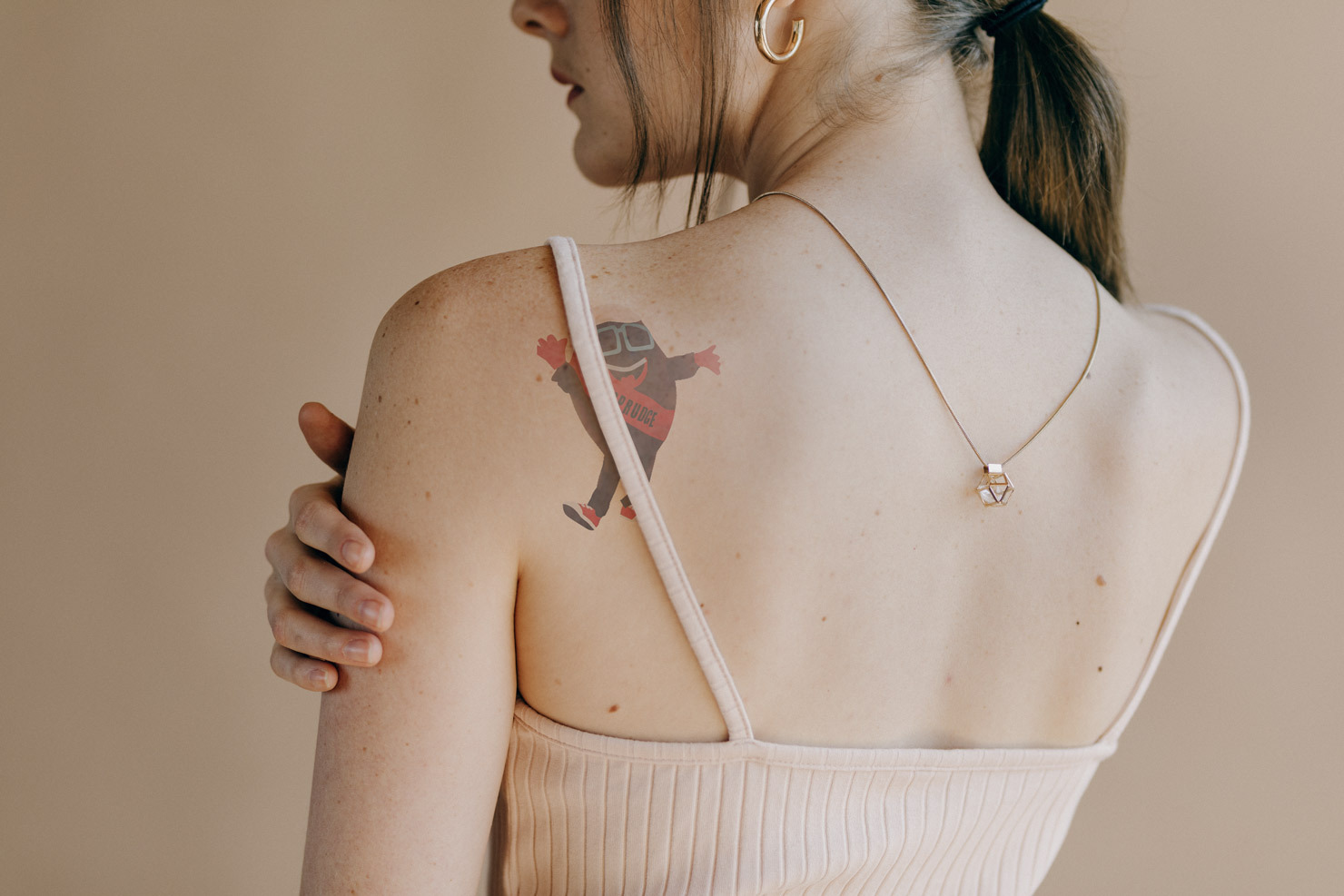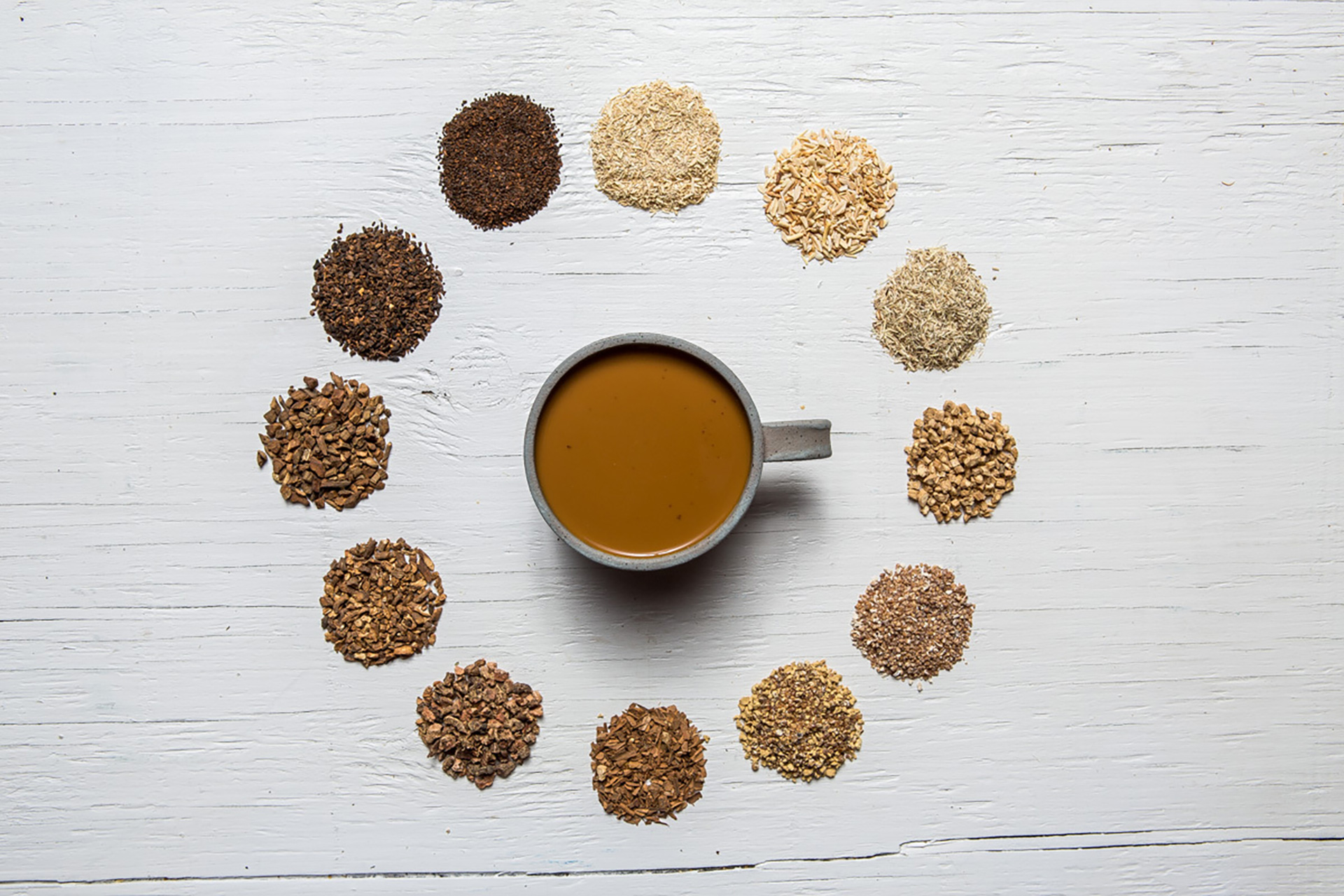Engineer Alan Adler founded Aerobie in 1984 to produce the world-record holding Aerobie Pro Ring, and has since invented no fewer than 26 additional products. In 2006, Aerobie took a deviation from sporting goods to produce a coffee maker: the AeroPress. This plastic device is basically an oversized, blunt syringe with a coffee filter attached, but its versatility and unique extraction profile has turned the brewer into an unlikely smash-hit amongst coffee obsessives of all stripes.
Last year, and for the first time, the AeroPress accounted for more than half of Aerobie’s total sales. Meanwhile the competitive AeroPress circuit, which started as somewhat of a lark, has matured into an engaging, freewheeling network of competitions across the globe. Don’t believe us? Look at this catalogue of amazing national competition posters, from Singapore to London, Scotland to the Philippines.
The world of competitive AeroPressing is an unlikely global coffee phenomenon, so much so that Alan Adler, founder of Aerobie and designer of the AeroPress, was on hand at Stumptown Coffee Roasters to observe the madness for himself at the US AeroPress Championships in Seattle a few weeks ago. Mr. Adler sat with Sprudge for an interview, during which we asked him about the roots of his invention, the culture of Aerobie, the wild turns the product has taken in consumer hands, and unexpectedly, his work as a flautist.

Let’s start at the beginning. How did Aerobie get started?
I was an electronics engineer most of my life. I had a hobby with sailing and sailboat design and that motivated me to study aerodynamics. When I started the company I had already been designing flying rings, flying discs, and boomerangs, and licensing my designs to other companies. I had been doing that for six or seven years. The Aerobie Pro Ring was the best flying toy I had ever designed and my wife suggest we start a company and that’s what we did.
Have you always been a coffee drinker?
Yes.
How would you make coffee before the AeroPress?
We had a variety of ways. We had an old pod machine that used the old paper pods. We had an automated drip machine. We had a Chemex. And it was from a little tiny instruction sheet that was packed with the Chemex that I first learned about the benefit of lower temperature. That little instruction sheet said coffee tasted better if you brewed it at lower temperature.
Is that was sparked you desire to make your own device?
It began with a desire to make a good, single serve coffee for myself.
I had a conversation with the wife of our sales manager and we were commiserating about how an automated drip machine worked pretty well for a batch of coffee but fell flat when you tried to make a single serving. I started experimenting with pour-overs. I experimented with temperature and I found I liked 175 degree water.
I was frustrated by the fact that the wet time was four to five minutes with a pour-over and I tried to start pushing on the slurry with the back of a soup spoon–and that had no effect whatsoever. So I realized I need a closed chamber that I could pressurize. I had my own shop–so I designed and made something in my own shop in a day that wasn’t too terribly different than the AeroPress today. It just worked amazingly well. I was just absolutely blown away by how sweet the coffee tasted–it wasn’t bitter!
So I made a number of them and at some point I brewed a cup of coffee for our general manager at Aerobie. I still remember his exact words, he said, “Alan, I can sell a ton of these.” (laughs) So we decided to make it a product. I spent nearly a year perfecting the design, experimenting with different variations.
Can you tell us about those variations?
Some of the variations were really a waste a time because I didn’t know how to use my own invention. By that I mean I thought you could push down on the AeroPress and within a few seconds “woosh!” you would have a cup of coffee. I didn’t appreciate that you had to wait to let it flow through slowly.
So I was experimenting with ideas to create much higher pressure–I even had a few designs that were pressurized with a bicycle pump, believe it or not. In the end I chose what we have today, because it’s also self-cleaning. It took nearly a year to get production moulds fully debugged and working well. They were finished and ready for the Fall Seattle CoffeeFest in 2005, right here in these very halls.
Did you ever think that the AeroPress would spawn the World AeroPress Championship?
Not in my wildest fantasy dreams did I ever consider that. The funny thing is that we’ve encouraged competition with our flying toys. We’ve put on competitions for the longest throws. But the idea of competing with something to make what you drink every morning never occurred to me.
That idea came from Tim Varney and Tim Wendelboe. Tim Wendelboe held a World AeroPress Championship at his cafe. When I reflect on it now, the AeroPress really is a perfect thing for a competition because it’s so flexible. It encourages innovation. You couldn’t really have that with an ordinary espresso machine because it’s pretty set with how it works–but the AeroPress, there’s just an unlimited amount of ways you can use it.
Being a inventor myself with some forty patents I’m mindful of the fact that there are people that love to innovate–and those are the folks that come to the championships, for the most part. Although the winner this year at the US AeroPress Championship, Jeremy Moore, he had a pretty straightforward way of doing it. If you look at his recipe on Sprudge, it wasn’t terribly different from what we tell people to do.
At times, it’s been wildly different. Andy Sprenger’s win in Boston last year was really odd. Bizarre, but it won, it must’ve tasted really good!
What coffee do you like to drink at home?
I mostly like high-grown Guatemalan. The most important thing about coffee to me is the degree of roast. I like full-city or sort of medium roast. I say that I like my beans to look like a milk chocolate Hershey bar.
Do you still use the recipe on the box?
Yes. The whole motivation for making the AeroPress is a short wet time. I think a short wet time gives a sweeter cup. I think the temperature with 175 was not my invention–we tested a lot of temperatures on a lot of testers and they all preferred 175.
How many AeroPresses does Aerobie make a year?
About a half a million. And they’re all made in California.
Is the demand for AeroPress growing?
Yes, it’s our fastest growing product. It grows by about forty percent a year.
Are AeroPresses surpassing the demand of the flying discs?
Last year, for the first year, it crept past the sales of everything else combined. Our second best seller is our very first product, the Pro Ring. It’s still a favorite of mine, too. I still play with it, I still go outside and throw it around with friends.
Yes! I believe Sightglass Coffee sells it alongside the AeroPress.
Cyclops?
Sightglass.
Sightglass, pardon me! I didn’t know that.
Any new AeroPress products in the future?
Well, off and on, a few people have asked about a larger AeroPress and I’ve conducted experiments on a larger one but I haven’t found a design that I really love. Most of the occasions I experience when making coffee, the amount of coffee I make is covered by the existing AeroPress–it can make up to four servings in one pressing. It’s extremely rare–maybe once or twice a year, that I want to make more of that. So I don’t feel any sense of urgency to make a bigger one but it could happen–I’m just not sure.
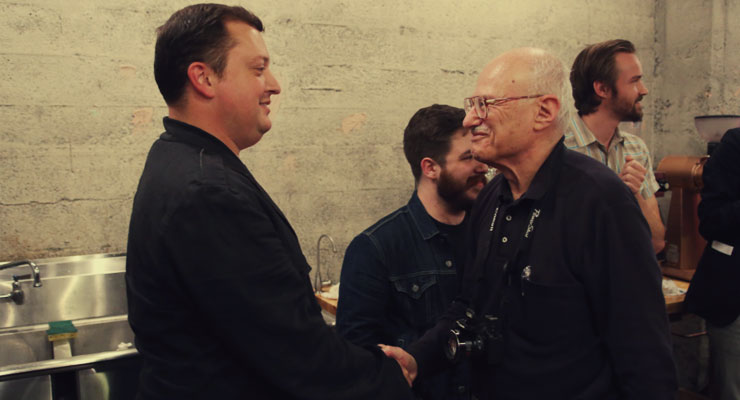
Any other coffee products you’re tinkering with?
There are things that we think about from time to time but none of them have appealed to us strongly enough to make that move into a product. A lot of other companies feel like they must come out with products every year and we tend to wait until we just really love something before we bring it out. So every product that we’ve ever brought out in the thirty years we’ve been around is still in our line-up. We’ve never dropped a product.
Author and Coffee Ratings founder Kenneth Davids famously wrote a glowing testimonial for the AeroPress. How did you get connected with Ken Davids early on?
I had all of his books and I knew he was a Bay Area person and I just called him up. I tested the earliest prototypes on him and his encouragement was one of things that helped us go through with it and invest in it.
Can you tell us more about your interest in flutes?
Well that’s just a hobby.
When did you start playing the flute?
I first got interested in it thirty years ago. Then I abandoned it for many, many years. About six years ago I started again.
What type of flute do you play?
I like end-blown flutes which are a cousin of the Japanese Shakuhachi. I’ve come up with my own mouthpiece design which works well for me.
If you Google Image Search my name Alan Adler and “flutes” there’s a few pictures out there on cyberspace of my flutes.
You record some of your music?
Yes. I like to improvise. At first I was trying to transcribe the things I invented with pencil and paper and then I discovered the lazy way is just to record them. When I want to play the same piece again I just listen to the recording and can easily play off of that.
Would you mind sharing your recordings with our audience on Sprudge?
I guess not, I can do that. But please be sure to tell them I’m a total amateur.
Thank you so much for the time, Alan.
Thank you!




